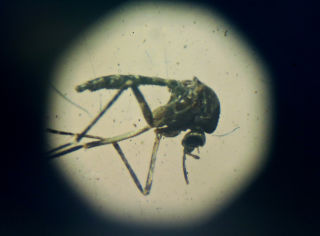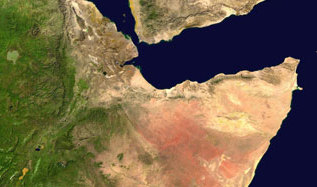PBS: Escaping Eritrea … [Read More...] about ካብ ውሽጢ ቤት ማእሰርታት ኤርትራ
How Zika Virus Can Spread

When Andrew Haddow was a boy, in the nineteen-eighties, his father told him bedtime stories about his grandfather, a Scottish scientist named Alexander John Haddow, who studied rare viruses in the jungle outside Entebbe, Uganda. As Haddow got older, he began reading his grandfather’s papers. One of them was about the discovery, in 1947, of a virus in the blood of a rhesus monkey that lived in the Zika Forest. This virus—which, like dengue fever and yellow fever, is transmitted to humans mostly by mosquitoes—remained virtually unknown for the next sixty years, but it interested Haddow. In 2012, Haddow, now a medical entomologist, published a paper on the genetic lineage of the Zika virus. Haddow identified two points of origin—one African, the other Asian—and showed that a recent outbreak on the island of Yap, in the Federated States of Micronesia, had been caused by the latter strain. His paper also warned that Zika might spread.
Today, in much of Latin America, Haddow’s prediction has become a frightening reality. The World Health Organization estimates that the virus could infect as many as four million people in the coming months; on Monday, it declared the outbreak a “Public Health Emergency of International Concern,” a designation that has rarely been applied in the past, and is intended to coördinate international funds and expertise. Fortunately, the majority of people who catch Zika (perhaps eighty per cent) will experience no symptoms. But what no one, including Haddow, foresaw was the apparent, though still unproven, link between the virus and microcephaly, a condition that causes babies to be born with abnormally small heads and, in most cases, irreversible brain damage. In Brazil, where the virus was first reported in May, health officials have implicated Zika in thirty-seven hundred new cases of microcephaly. (Fewer than a hundred and fifty cases surfaced in 2014.) Some epidemiologists have said that the virus’s invisibility makes it more dangerous; a pregnant woman might not know that she has contracted it.
Although mosquitoes are responsible for the great majority of transmissions, Haddow helped to discover that the virus can also be sexually communicated. In 2009, during a field study in Senegal, he met another medical entomologist, Kevin Kobylinski, who was conducting malaria research. They went out for beers, and Kobylinski described a mysterious illness—rash, extreme fatigue, joint pain, blood in his semen—that had plagued both him and a colleague, Brian Foy, after a trip to the country the previous year. Foy’s wife, who had not been to Senegal, had also become ill, nine days after his return to the United States. Haddow immediately suspected Zika. Kobylinski sent him blood samples, which proved that the diagnosis was correct. In 2011, they co-authored a paper in the journal Emerging Infectious Diseases suggesting, based on circumstantial evidence, that Foy had unwittingly infected his wife with Zika. Foy also proposed that sexual transmissions might have contributed to the outbreak on Yap, which touched seventy-three per cent of the island’s population.
Meanwhile, Zika had been travelling east. In 2013 and 2014, French Polynesia experienced a large outbreak. The virus had hopscotched across the South Pacific—the Cook Islands, New Caledonia, Easter Island. In each place, local mosquitoes likely fed on the Zika-infected blood of travellers. Then, in August of 2014, according to Didier Musso, a French scientist based in Tahiti, teams from those South Pacific island groups competed in a canoe race, the Va’a World Sprint Championship, which was held in Rio de Janeiro.
Now the virus has spread to more than twenty countries in the Americas. It’s coming our way. So far, thirty-six Americans, including four pregnant women and five New Yorkers, are reported to have contracted the disease, all while travelling outside the country. Air-conditioning, screened windows, and modern plumbing will most likely prevent Zika from spreading too readily here. The same cannot be said of Brazil, or Colombia, or El Salvador. It’s the rainy season in much of Latin America, and the mosquito population in cities is at its festering peak. Brazil has deployed two hundred thousand troops to reduce the numbers of bugs, an effort that promises to be about as effective as using a colander to remove salt from the sea. Colombia’s national health institute reported that twenty-one hundred pregnant women have contracted the Zika virus. In El Salvador, the government recently announced that women should not get pregnant until 2018—despite the fact that abortion is illegal there and contraceptives are difficult to find.
Viral epidemics like this one are not just the result of human encroachment on the jungles of Uganda, or of teams of travelling canoeists from the South Pacific, or even, simply, of globalization. Aedes aegypti, the mosquito that is largely responsible for transmitting pathogens such as Zika and dengue, thrives in the warm, humid, increasingly dense urban centers of Latin America, and climate change has been making these places warmer and wetter. According to a report by the World Health Organization, dengue infected people thirty times more frequently in 2013 than it did in the nineteen-sixties, making it the planet’s most rapidly spreading mosquito-borne virus. The International Panel on Climate Change recently projected that “the area of the planet that was climatically suitable for dengue would increase under most scenarios.”
One way to combat Zika might be to target the DNA of the Aedes mosquito. This method has been attempted before, as Michael Specter reported in the magazine in 2012. Researchers breed a strain of male Aedes with a single modified gene, which programs its offspring for self-destruction. The mutant males are released into the wild, where they mate with females, fertilizing their eggs; after the eggs hatch into larvae, they die. In field studies conducted in the Cayman Islands, Panama, and Brazil, the genetically modified Aedes was able to reduce the wild-mosquito population by ninety per cent, cutting down significantly on transmission rates at the same time.
Last year, Brazil’s National Biosafety Technical Commission awarded Oxitec, the company that invented and developed the mutant Aedes, a license to release it anywhere in the country. In April, Oxitec began its “friendly Aedis aegypti program” in partnership with the city of Piracicaba, in southeast Brazil. The local government chose to roll out the program in a neighborhood with a high level of dengue infection. (Zika was still largely unknown.) White vans now cruise its streets, releasing up to eight hundred thousand male mosquitoes a week. According to the latest data, the “friendly” insects have reduced the wild Aedes population by eighty-two per cent.
In September, as reported Zika cases were multiplying, a biotech corporation called Intrexon bought Oxitec. On January 19th, Intrexon announced plans to expand Oxitec’s Aedes program in Piracicaba, and to build a new mosquito-making factory in the city that will be thirty times larger than its existing plant. This may be only the beginning. “We’ll be growing a lot faster in the next six months,” Glen Slade, Oxitec’s head of business development, told me on Friday. “We’re having conversations in Mexico, as we are in many other countries. We’ve had significant interest from a lot of other Brazilian municipalities as well.” The company is waiting for Brazil to approve its application for a license that will allow it to sell its mosquitoes commercially. Slade said the company didn’t know yet what it would charge. Late last week, Intrexon’s stock spiked by twenty-four per cent.
